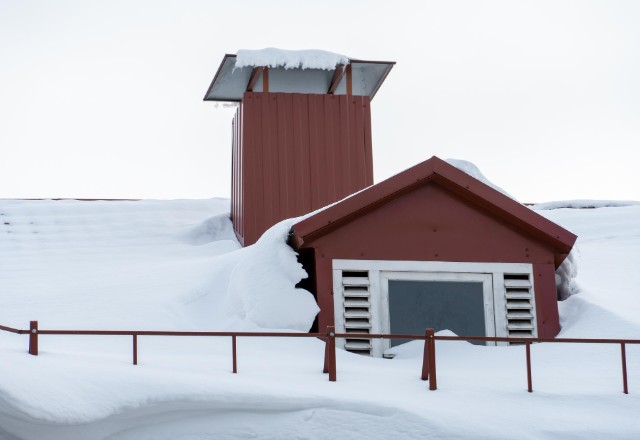Are you planning to replace your roof? The process can be both costly and time consuming, so it’s important to make sure you maximize your insurance coverage to get the best value for your money. In this article, we’ll look at how you can get the most out of your insurance policy when it comes to roof replacement, as well as provide tips on finding a cost-effective solution. Read on to learn more about how you can make sure you have the coverage you need for a successful roof replacement project!
Disclaimer: This article is intended for educational purposes only and does not constitute professional advice. If you require specific advice about roof replacement and insurance, we recommend consulting with a specialist from Advance Roofing LLC
What is Roof Replacement?
A roof is one of the most important parts of any house as it provides protection from the elements. Over time, however, even the most well-constructed and maintained roofs will eventually need to be replaced. When a roof deteriorates to the point of no return, it can become a hazard to the safety of the occupants of the house. This may necessitate a roof replacement.
Roof replacement is the process of removing the current roof and installing a new one. This project generally requires the expertise of a professional roofing contractor. Replacing a roof is not an easy task and requires a combination of skills and experience. Without proper installation, a new roof will not function properly, and can become a hazard to those residing in the house.
There are many reasons why a homeowner may need a roof replacement. Age, weather damage, and wear and tear can all impact the effectiveness of a roof. Depending on the roofing material, a roof may last anywhere from 15 to 50 years before it needs to be replaced.
Some signs that a roof may require replacement include:
Cracked, curled or missing shingles
Sagging roof deck
Sunlight filtering through the roof boards
Leaks in the attic or living spaces
Stains on the ceiling and walls
Visible signs of rot, moisture or mold
Replacing a roof can be costly, but it is a necessary investment in the safety and functionality of a home. Homeowners should seek the advice and assistance of a reputable roofing contractor to determine the best course of action for their specific situation.
Why Do I Need Insurance Coverage for Roof Replacement?

As a homeowner, ensuring that your property is adequately insured is essential to protecting your investment. Your roof, in particular, is one of the most critical components of your home’s structure and can be susceptible to damage from various weather elements and age-related wear and tear. This is why having appropriate insurance coverage for roof replacement is crucial.
A roof replacement is a significant project that requires a considerable financial investment. The cost of replacing a roof can vary based on the size of the property, roofing materials, labor costs, and other factors. Without proper insurance coverage, a roof replacement may take a significant toll on your finances and leave you struggling to make ends meet.
Some insurance policies may offer actual cash value coverage, which means that the insurer will only cover the current value of your roof, factoring in depreciation. In such instances, you may have to foot the difference between the replacement cost of the roof and what the insurance company is willing to pay.
On the other hand, replacement cost coverage will cover the entire cost of replacing your roof minus your deductible. This type of coverage is usually a bit more expensive but is often worth the higher price as you can get coverage for the full replacement cost of your roof.
When dealing with insurance claims for a roof replacement, it’s best to work with professional roofing contractors who have experience working with insurance companies. They can help you navigate the claims process and ensure that you receive the appropriate coverage for your roof replacement needs. They can also provide detailed estimates and documentation that will help support your insurance claim and will maximize your coverage for a cost-effective solution.
In conclusion, having appropriate insurance coverage for roof replacement is essential for protecting your investment. It can provide peace of mind and ensure that your finances are not significantly impacted in the event of roof damage. Make sure to review your homeowners’ insurance policy to see what type of coverage you have and work with experienced professionals to ensure that you get the best possible coverage for your roof replacement needs.
Factors to Consider When Choosing an Insurance Provider

Choosing an insurance provider is always a crucial decision that can have long-term effects on your financial stability. With numerous insurance companies offering a variety of policies, it’s essential to take your time and consider multiple factors before settling on the right provider. Here are some vital factors to consider when choosing an insurance provider:
- Reputation: The reputation of an insurance company can give you an insight into their customer service, claims handling, and financial stability. You can check for testimonials
and reviews from previous and current clients to have an idea of how the company operates.
- Financial stability: You want to choose an insurance provider that is financially stable and reliable. This means that the insurance company should have a strong financial rating and a history of paying claims promptly.
- Type of coverage: Before choosing an insurance provider, it’s essential to consider the type of coverage that you need. Different insurance providers offer various policies, so you want to choose one that meets your specific needs.
- Cost of coverage: The cost of coverage will vary depending on the insurance company and the type of policy you choose. Comparing prices from different providers can help you find affordable coverage that fits your budget.
- Customer service: Excellent customer service is essential when dealing with insurance providers. Choose a company that has responsive customer service representatives who are knowledgeable, friendly, and willing to help you with your concerns.
- Discounts: Some insurance providers offer discounts for customers who bundle their policies, have a good driving record, or have certain safety features installed in their car or home. Look for companies that offer discounts that align with your lifestyle and habits.
Choosing the right insurance provider is vital for your financial security. Take your time to evaluate your options, compare quotes, and consider the above factors to ensure that you get the right coverage for your needs.
Price
Price is an essential factor to consider when it comes to roof replacement and insurance. While it may be tempting to go with the cheapest insurance provider or roofing company, it’s important to remember that quality does come at a cost. A low price may seem appealing at first glance, but it could end up costing you more in the long run.
When it comes to insurance, lower premiums may equate to higher deductibles and limited coverage. This could leave you with a significant out-of-pocket cost in the event of a roof repair or replacement. It’s crucial to carefully read and understand the terms of your insurance policy before signing anything and to ask questions to clarify anything that isn’t clear.
Additionally, some roofing companies may offer lower prices, but this could be due to using lower quality materials or cutting corners during the installation process. These shortcuts may save you money initially, but they could lead to problems down the line, such as leaks, mold growth, and structural damage. Investing in a reputable roofing company that uses high-quality materials and follows proper installation procedures can save you money in the long run by preventing costly repairs and replacements.
Ultimately, finding a fair price for both insurance coverage and roof replacement is about finding the right balance between cost and quality. Comparing prices among different providers and roofing companies can help you make an informed decision. Remember to consider all factors, such as reputation, financial stability, type of coverage or roofing material, customer service, and discounts, to ensure that you are getting the most cost effective solution for your roof replacement and insurance needs.
Coverage Options

When it comes to roof repair or replacement, having the right insurance coverage can make all the difference in keeping your costs low. There are several types of coverages available to homeowners, and understanding them can help you choose the most cost effective option for your situation.
One type of coverage is actual cash value (ACV) coverage. This coverage takes into account the age, condition, and wear and tear of your roof to determine its value. In the event of roof damage, your insurance company will pay out the replacement cost minus any depreciation. This type of coverage is typically less expensive in terms of monthly premiums, but it may not cover the full cost of a roof replacement.
Another option is full replacement cost coverage. This coverage will replace your roof at the current market value without factoring in depreciation. While this coverage may come with a higher monthly premium, it can offer more comprehensive protection and may be worth the investment in the long run.
It’s important to note that insurance policies often have specific exclusions and limitations, so it’s essential to read through your policy and understand what is covered. For example, some policies may not cover damage caused by normal wear and tear or lack of maintenance. Others may exclude damage from certain types of weather events, such as hail or wind.
If you’re unsure about your coverage options, speaking with an insurance expert can help. They can help you understand your policy and assist in determining the coverage that’s right for you.
Finally, it’s important to note that filing a claim for roof damage can impact your insurance rates. If your policy includes a high deductible, it may be more cost-effective to pay for smaller repairs out-of-pocket rather than filing a claim. Similarly, investing in routine maintenance and inspections can help prevent damage and prolong the life of your roof, ultimately saving you money in the long run.
In conclusion, understanding your coverage options is essential in ensuring that your roof repair or replacement is cost-effective. Taking the time to read through your policy, consulting with an insurance expert, and investing in routine maintenance can help you make the most of your insurance coverage while keeping costs low.
Actual Cash Value (ACV) Policy
When looking for insurance that covers roof replacement, one of the most basic options is an Actual Cash Value (ACV) policy. This type of policy provides coverage for the current market value of your home and belongings, which means that your payout in the event of a roof replacement claim will be based on the depreciated value of your roof.
One of the main advantages of an ACV policy is that it typically comes with lower premiums than other types of policies. This is because the payout you receive will only
cover the depreciated value of your roof, which is lower than the cost of a brand new roof. For homeowners who are looking to save money on their insurance costs, an ACV policy may be a good option.
However, it is important to note that an ACV policy may not provide enough coverage to fully replace your roof in the event of damage. This is because the payout you receive will be based on the depreciated value of your roof, which may not be enough to cover the full cost of a new roof. For this reason, an ACV policy may not be the best option for homeowners who have an older roof that is nearing the end of its life.
Furthermore, an ACV policy may not cover certain types of damage to your roof, such as damage from a pest infestation or damage from lack of routine maintenance. This means that if your roof is damaged in a way that is not covered under your policy, you will not receive a payout from your insurance provider.
When considering an ACV policy for roof replacement coverage, it is important to carefully weigh the benefits and limitations of this type of policy. While it may come with lower premiums, it may not provide enough coverage to fully replace your roof in the event of damage. Working with an experienced insurance agent can help you to determine whether an ACV policy is the right choice for your individual needs and budget.
Replacement Cost Value (RCV) Policy
Roof replacement can be a significant financial burden for homeowners. Fortunately, homeowners insurance policies can provide coverage for roof replacement in the event of damage. However, the type of policy you have can greatly impact the amount of coverage you receive. One type of policy that offers comprehensive coverage for roof replacement is the Replacement Cost Value (RCV) policy.
An RCV policy provides coverage for the full cost of replacing your roof. Unlike an Actual Cash Value (ACV) policy, which only covers the depreciated value of your roof, an RCV policy takes into account the current cost of materials and labor to completely replace your roof. This means that if your roof is damaged beyond repair, an RCV policy will provide sufficient coverage to replace it with a brand new one.
There are several key benefits to having an RCV policy. Firstly, you can have peace of mind knowing that you have comprehensive coverage for your roof. This can be especially important for homeowners who live in areas with frequent weather events, such as hailstorms or heavy snow, which can cause significant damage to a roof. With an RCV policy, you can rest assured that you have financial protection in case of such events.
Additionally, an RCV policy can be a cost-effective solution for homeowners. While RCV policies may come with higher premiums than ACV policies, the added coverage can ultimately save you money in the long run. This is because an RCV policy ensures that you receive the full amount needed to replace your roof, rather than having to pay out-of pocket for the difference between the depreciated value and the full replacement cost.
It’s important to note, however, that there are some requirements for homeowners to have an RCV policy. Typically, insurance providers will require that your roof meets certain requirements, such as being made of standard roofing material like asphalt shingles, and being in good condition and regularly maintained. Additionally, you may need to meet certain deductible requirements in order to qualify for an RCV policy.
Overall, an RCV policy can be a great option for homeowners looking for comprehensive coverage for roof replacement. While it may come with higher premiums and certain requirements, the added protection and cost-effectiveness can be well worth it in the long run. Contact your insurance provider to discuss your options for RCV policies and see if it’s the right choice for you.
Endorsements for Additional Coverage

When it comes to protecting your home and its contents, your standard insurance policy may not cover everything. This is where endorsements for additional coverage can be a valuable addition to your insurance policy.
Endorsements, also known as riders, are additional provisions that can be added to your insurance policy to provide coverage for specific items or types of damage that are not included in your standard policy. They can be a cost-effective way to increase your coverage and protect against risks that are unique to your situation.
For example, if you live in an area prone to earthquakes, you may want to consider adding an earthquake endorsement to your homeowners insurance policy. Or if you have expensive jewelry or artwork, you may want to add a valuable items endorsement to ensure that those items are fully covered in case of loss or damage.
It’s important to note that endorsements can vary by insurance provider, so it’s important to work with your insurance agent to determine what endorsements may be appropriate for your specific needs. Some common endorsements include:
Water backup coverage: This endorsement covers damage caused by water backup or overflow from sewers, drains, or sump pumps.
Home business coverage: This endorsement provides coverage for business equipment and liability for business activities conducted in your home.
Personal injury coverage: This endorsement includes coverage for libel, slander, defamation, invasion of privacy, and other personal injury claims.
Scheduled personal property coverage: This endorsement provides coverage for high-value items such as jewelry, artwork, and antiques.
It’s important to understand that endorsements typically come with an additional cost to your insurance premium. However, this cost may be lower than purchasing a separate policy for the specific coverage you need.
In addition to adding endorsements, it’s important to regularly review your insurance policy with your agent to ensure that your coverage continues to meet your evolving needs. By taking a proactive approach to protecting your home and your possessions, you can have peace of mind knowing that you’re fully covered in case of unexpected events.
Covered Perils That May Require Roof Replacement
Roof replacement can be a costly expense for homeowners, especially if it comes unexpectedly. In some situations, your homeowner’s insurance policy might cover the cost of a roof replacement. However, the damage to your roof must be the result of a covered peril that is specifically listed in your policy.
Here are some common covered perils that might require roof replacement:
- Hail Damage: Hailstorms can cause significant damage to roofs. Hailstones, especially if they are large, can dent or crack shingles, causing leaks and other problems. If your roof has been damaged by hail, your policy might cover the cost of a roof replacement.
- Wind Damage: High winds can blow shingles off your roof or cause other damage that might require repairs or a full roof replacement. If the damage is the result of a covered peril, such as a hurricane, your insurance policy might cover it.
- Water Damage: Water damage can be caused by a variety of events, including rainstorms, burst pipes, and natural disasters. If the water damage is severe enough, it might require a roof replacement. However, the cause of the water damage must be a covered peril.
- Fire Damage: Fires can cause extensive damage to your home, including your roof. Depending on the severity of the damage, a roof replacement might be necessary. If the fire was caused by a covered peril, such as lightning, your policy might cover the cost of a new roof.
It’s important to note that not all homeowner’s insurance policies are created equal. The covered perils in your policy will depend on the specific terms and conditions outlined by your insurance company. Some policies may have exclusions or limitations on coverage for certain types of damage.
To ensure you have the appropriate coverage for your needs, it’s important to review your policy with your insurance provider and understand what is and isn’t covered. It’s also a good idea to have your roof inspected regularly to identify any potential problems before they become major issues. By being informed and proactive, you can protect yourself and your home from unexpected expenses related to roof replacement.
Hail Damage

Hailstorms can cause significant damage to roofs, leading to costly repairs or even full roof replacements. Hailstones, especially if they are large, can dent or crack shingles, causing leaks and other problems. If your home has been hit by a hailstorm, it’s essential to have your roof inspected by a professional to determine the extent of the damage.
Most homeowner’s insurance policies provide coverage for hail damage, as it is considered a covered peril. However, it’s important to carefully review your policy to understand the specific terms and conditions. Some policies may have exclusions or limitations on coverage for certain types of damage, which could affect your ability to file a claim for hail damage.
If you do need to file a claim for hail damage, it’s important to follow the proper procedures set forth by your insurance company. This typically involves contacting your insurance provider and reporting the damage, providing any necessary documentation or
evidence, and working with an insurance adjuster to assess the damage and determine the appropriate coverage.
It’s also important to choose a reputable and experienced roofing contractor to handle the repairs or replacement of your roof. Look for a company that is licensed and insured, with a proven track record of quality workmanship and customer satisfaction. Be wary of fly by-night contractors who may try to take advantage of homeowners in the aftermath of a hailstorm.
In addition to filing a claim for hail damage, homeowners should take steps to prevent future damage to their roofs. Regular maintenance, such as cleaning gutters and inspecting shingles, can help identify potential issues before they become major problems. Consider upgrading to more durable roofing materials, such as impact resistant shingles, which can provide added protection against hail damage.
In conclusion, hail damage can be a major headache for homeowners, but proper insurance coverage and proactive maintenance can help mitigate the risk and cost of repairs. By taking the necessary steps to protect your roof, you can ensure that your home is safe and secure, even in the face of severe weather.
Water Damage
Water damage can wreak havoc on a home, causing serious structural damage and potential health hazards if not dealt with promptly and appropriately. Unfortunately, water damage is not always covered by homeowners insurance policies, so it’s important to understand your coverage and take steps to prevent and mitigate water damage.
Most homeowners insurance policies cover sudden and accidental water damage, such as a burst pipe or sudden and unexpected appliance malfunction. However, damage caused by slow leaks, lack of maintenance, or flooding may not be covered or may require additional coverage.
It’s important to review your policy and understand your coverage before water damage occurs. Consider adding additional coverage for flood or water damage if you live in an area prone to flooding or have a history of water damage in your home.
Preventing water damage is key to minimizing the risk and potential costs. Regularly inspecting your home for leaks, maintaining your plumbing and appliances, and ensuring proper drainage around your home can all help prevent water damage.
If you do experience water damage, it’s important to take action immediately to minimize the damage and prevent mold growth. This may include extracting standing water, removing wet materials, and using fans and dehumidifiers to dry out the affected area.
It’s important to document the damage and contact your insurance provider as soon as possible to begin the claims process. Work with a reputable water damage restoration company to ensure the proper cleanup and restoration of your home.
In summary, understanding your coverage, preventing water damage, and taking immediate action if damage occurs are key to minimizing the risk and potential costs of water damage in your home. By being proactive and prepared, you can protect your home and your wallet.
Fire Damage
Fire damage can be a devastating experience for any homeowner. Not only can it cause serious harm or injury, but the damage to your property can be significant and costly to repair.
As with any type of damage to your home, it’s essential to have a good understanding of your homeowner’s insurance policy and what it covers. Most standard policies will provide coverage for fire damage, but it’s important to review your policy to ensure you have adequate coverage for the value of your home and its contents.
If you experience a fire, safety should be your number one priority. Make sure everyone in the home has safely evacuated and call 911 immediately. Once the fire is out and it’s safe to return to your home, document the damage and contact your insurance provider as soon as possible to begin the claims process.
Working with a reputable fire damage restoration company can help minimize the risk of further damage to your property and aid in the restoration process. They will be able to assess the damage and provide recommendations for repairs and replacements needed.
It’s important to note that some items may not be covered under your standard policy, such as valuable jewelry or artwork. Consider adding additional coverage for these items or keeping them in a secure off-site location.
Preventing fires is key to minimizing the risk of fire damage to your home. Some common causes of fires include electrical malfunctions, cooking accidents, and smoking indoors. Ensuring your electrical system is up to code, being mindful in the kitchen, and never smoking inside can all help prevent fires.
In conclusion, fire damage can have a significant impact on your home and life. Reviewing your homeowner’s insurance policy, practicing fire safety, and working with a trusted restoration company can help prepare and protect you in the event of a fire.
Heavy Snow or Ice Damage

Heavy snow and ice can wreak havoc on the roof of your home, causing damage that may not be immediately noticeable. It’s important to be aware of the potential damage that can occur and take steps to prevent it.
One of the primary concerns with heavy snow is the weight it can put on your roof. A roof that is not built to withstand heavy snow loads can collapse, causing significant damage to your home and putting your family at risk. It is important to have your roof inspected regularly by a professional to ensure that it can handle the weight of snow and ice that it may encounter.
In addition to the weight of the snow, ice dams can also cause significant damage to a roof. When snow on the roof begins to melt, it can refreeze at the eaves of the roof, creating a barrier that prevents rain and melting snow from draining properly. This can lead to water damage and leaks in your home. Installing proper ventilation and insulation can help prevent ice dams from forming.
If you do experience damage to your roof from heavy snow or ice, it is important to take action as soon as possible. Document the damage and contact your insurance provider
to begin the claims process. A reputable roofing company can also provide a thorough inspection and cost estimate for repairs or replacement.
It is important to note that insurance coverage may vary depending on the cause of the damage. Some policies may cover damage caused by snow or ice, while others may only cover damage caused by a covered peril such as wind or hail. Review your policy carefully and consider adding additional coverage if necessary.
In order to prevent damage from heavy snow or ice, it is important to take preventative measures such as regular roof inspections and maintenance, installing proper ventilation and insulation, and clearing snow from your roof as soon as possible after a storm. By taking these steps, you can protect your home and family from the potential dangers of heavy snow and ice damage.
Conclusion
In conclusion, when it comes to roof replacement and insurance, it’s essential to maximize your coverage to ensure a cost-effective solution. Understanding the types of roof damage covered by your policy and the requirements for homeowners insurance is paramount. Regular inspection and routine maintenance of your roof can help prevent sudden damage and unexpected repairs. If you do experience damage to your roof, document the damage and contact your insurance provider to begin the claims process as soon as possible. Don’t forget to engage the services of a reputable roofing company to provide a thorough inspection and estimate for repairs or replacement. By following these guidelines, you’ll be better equipped to handle any potential roof-related issues, and have peace of mind knowing you’re adequately covered. Remember, a little bit of preparation now can save you a lot of trouble and expense down the road.



 509-201-4190
509-201-4190
